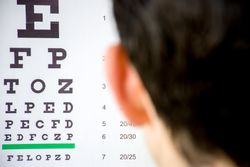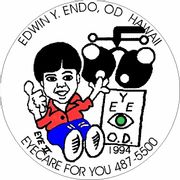What 20/20 Vision Means & How It's Measured

To assess vision changes, you need to keep up with regular eye doctor appointments. During eye exams, optometrists measure central vision. By analyzing the results, they can determine what steps must be taken to ensure a patient sees as clearly as possible. The 20/20 measurement is the standard used to gauge how close a person’s vision is to normal. To educate yourself for an upcoming eye exam, learn more about what 20/20 means here.
How 20/20 Vision Is Measured
The Snellen eye chart is used to measure central vision. The chart features various letters on different rows, with the characters gradually reducing in size as the eye looks down the chart. There are fractions on the side of each row. The top number on each fraction is 20. This is a base testing distance of 20 feet.
 A patient has to determine how well they can make out the letters at 20 feet away. The eye changes focus to view letters fewer than 20 feet away. The bottom number in the fraction is the number of feet someone with “normal” vision would have to stand to clearly see the different arcs on the same line in the eye chart.
A patient has to determine how well they can make out the letters at 20 feet away. The eye changes focus to view letters fewer than 20 feet away. The bottom number in the fraction is the number of feet someone with “normal” vision would have to stand to clearly see the different arcs on the same line in the eye chart.
Why 20/20 Doesn’t Mean Perfect Vision
Although 20/20 is the standard for good visual acuity, some people might have better vision. If someone has 20/15 vision, for example, it means they can see objects at 20 feet away that someone with 20/20 vision could only make out clearly from 15 feet away. Essentially, if the bottom number is fewer than 20, a person’s vision is better than 20/20. When the bottom number is greater than 20, a person has a below-normal vision.
If you’re due for an eye exam, reach out to Edwin Y. Endo, O.D. & Associates in Aiea, HI. The optometrists use state-of-the-art equipment to assess changes in patients’ vision and provide prescription glasses and contact lenses to correct refractive errors. Meet the staff online, and call (808) 487-5500 for an appointment.
About the Business
Have a question? Ask the experts!
Send your question

